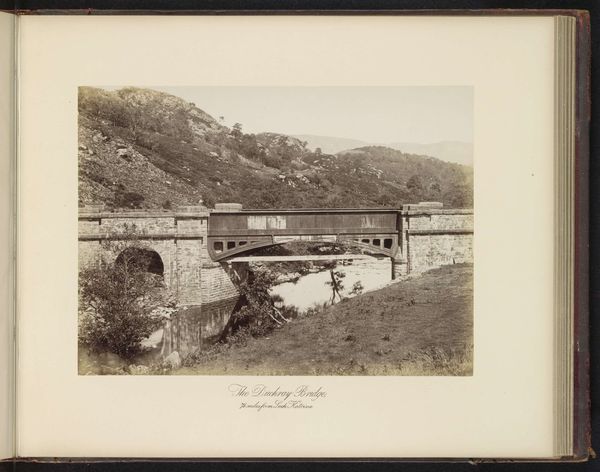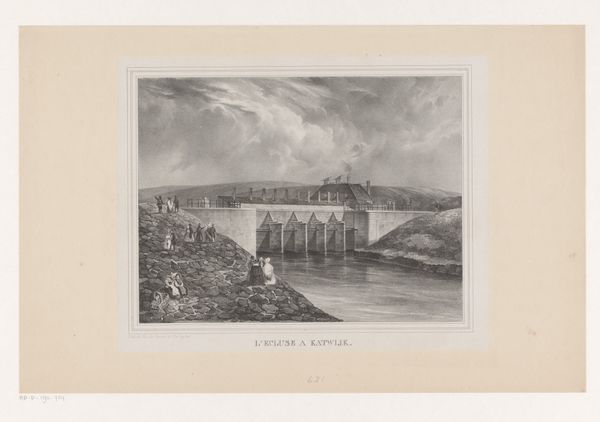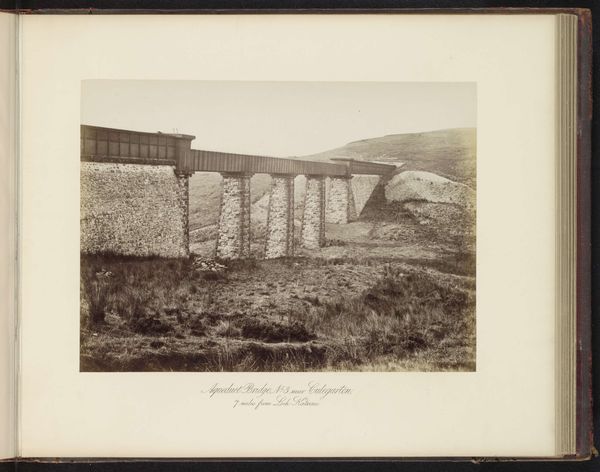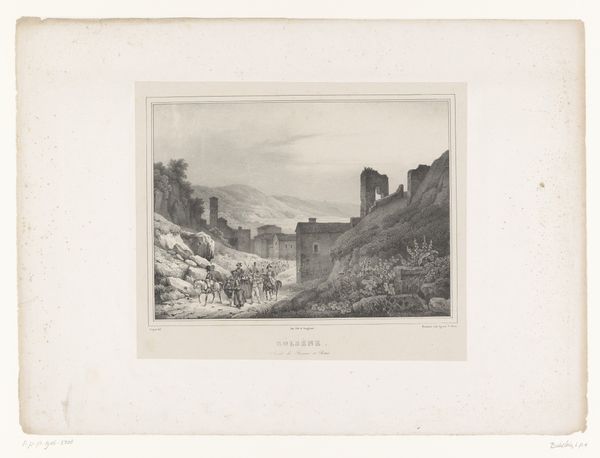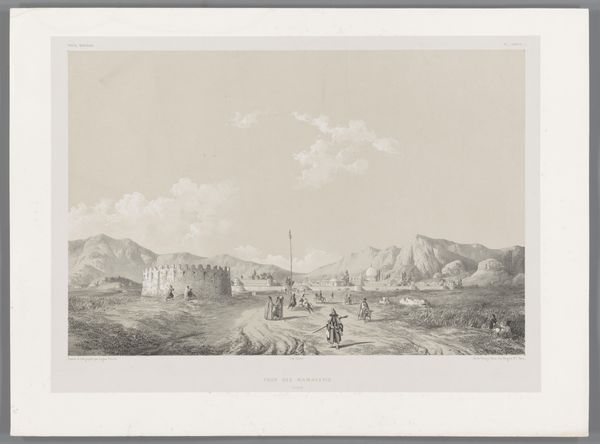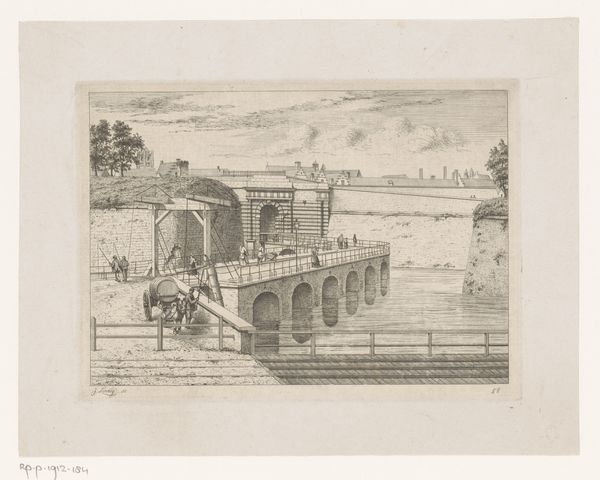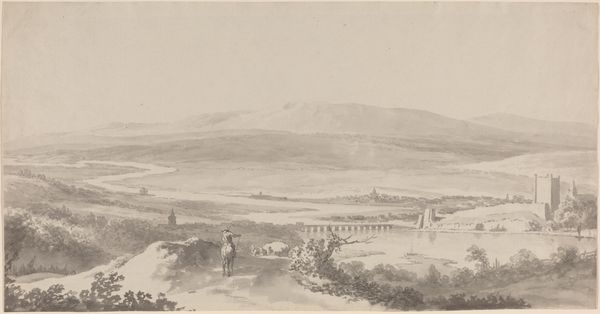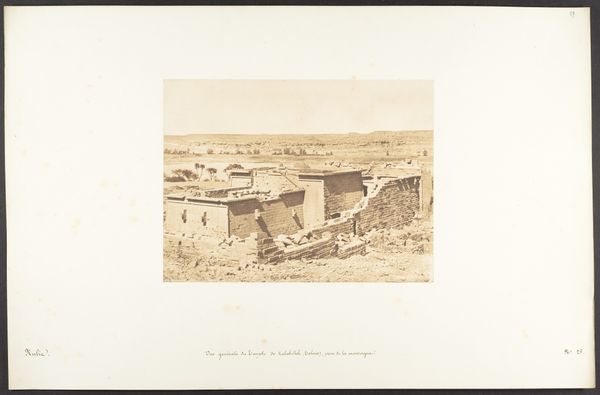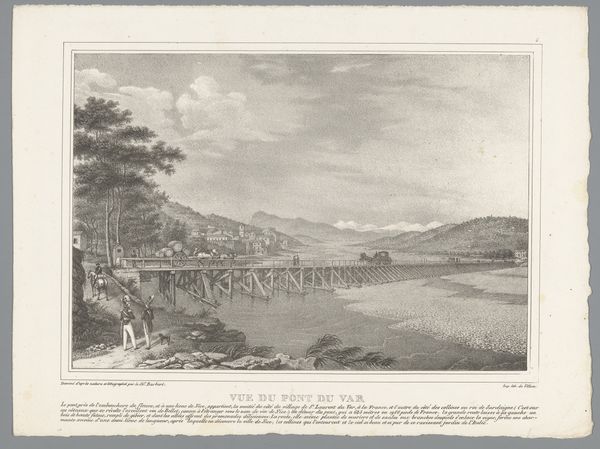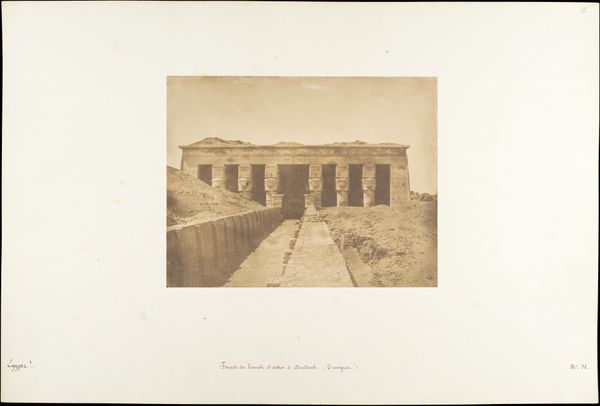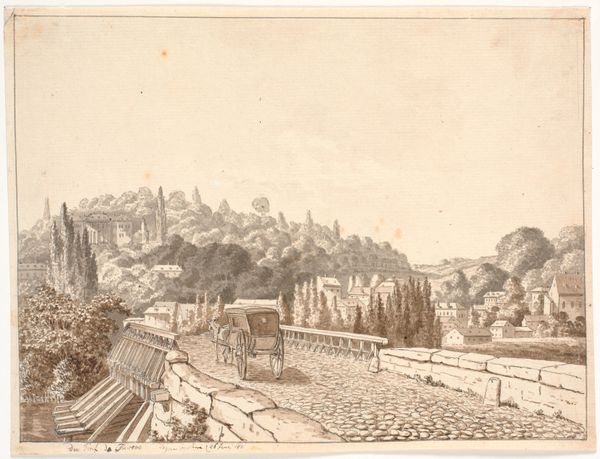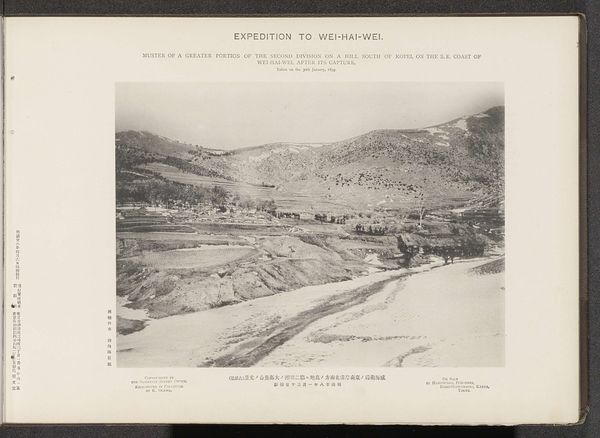
print, engraving
# print
#
landscape
#
romanticism
#
cityscape
#
engraving
Dimensions: height 399 mm, width 541 mm
Copyright: Rijks Museum: Open Domain
Curator: Let's delve into this captivating print, "View of a Fortress in Luxembourg," placing it in the Romantic era when there was immense focus on the awe-inspiring sublimity of nature. Paulus Lauters created this cityscape sometime between 1816 and 1875, skillfully rendered as an engraving. Editor: My immediate reaction is to the monumentality; this vista commands attention, conveying a sense of stoic endurance through the rigid architectural geometry but softened by natural light. Curator: The fortress obviously represents power and order, yet there's also a vulnerable element; it’s set against the backdrop of the landscape and people leisurely meandering throughout its passages. I suggest that Lauters is implying themes of social hierarchy and individual agency coexisting within these structured spaces. Editor: It raises some potent questions about labor and access; about who could walk these paths or inhabit this type of structure during its era of operation. Are these carefree wanderers privileged inhabitants, or simply figures to give scale? This scene suggests both privilege and imposed marginalization. Curator: Absolutely. I'd push us to acknowledge how museums and the art market often valorize such historically complex representations, thus potentially normalizing inequalities when context is overlooked. The romanticized presentation, which omits darker facets like imperialistic ambitions of fortresses, must be scrutinized. Editor: Right. I would like to investigate further into how public institutions perpetuate cultural narratives that overshadow critical analysis. How could museums leverage prints like these to instigate productive dialog surrounding difficult history? Curator: Indeed, let's ensure the conversations prompted transcend aesthetic appreciation. What roles do cultural objects like this play now, and what might they communicate in the future? Editor: Precisely, I concur—thoughtful interrogation offers boundless revelations.
Comments
No comments
Be the first to comment and join the conversation on the ultimate creative platform.
